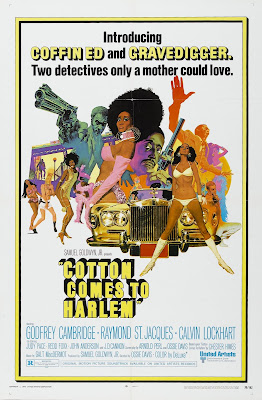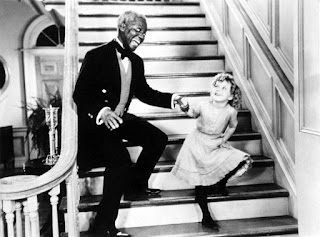Cotton Comes to Harlem
Ossie Davis directed Cotton Comes to Harlem. Ossie Davis was an actor, writer; he
studied drama with Rose McClendon Players in Harlem, New York City. The
screenplay was based off of a book by Chester Himes, which was adapted for the
screen by Arnold Perl and Ossie Davis. Cotton
Comes to Harlem was one of the most commercially successful films produced
by Hollywood starring Black actors. The film was produced on a budget of
$1.2 million and earned $5.2 million during its North American release. Cotton Comes to Harlem was the 22nd
highest grossing film of 1970.
Ossie Davis chose to film the movie in Harlem
and employed many of the locals as extras and crew, making it a film about a
community, filmed by the community. Cotton Comes to Harlem was considered by
many as the first Blaxploitation film. It depicted Black Power and the power
that black people can utilize by the methods of self-determination. The film
paralleled humor and drama, which attracted a large audience, a mainly black
audience.
Like many films in the 1970s Cotton Comes to Harlem played with genre
and manipulated it to become something slightly new. The film is a take on a
classic detective story, following two detectives, Grave Digger Jones and
Coffin Ed Johnson, played by Godfrey Cambridge and Raymond St. Jacques. In the
detective genre there is often a good cop and a bad cop, but in this film neither
is truly good or bad. Digger and Coffin are both tough cops that don’t mind
cracking a few skulls. Digger is the more comedic one were as Coffin is by far
the more serious cop. Through out the film they make reference to how they are
tough on those who hurt the black community and in the film that is Rev. Deke
O’Malley. He is shown in the film as a black man that has forsaken the black
community and used it instead for his own personal gain and greed. The main
theme in the film is the black community as a whole. Ossie Davis shows the
complexity of the Harlem community while also making reference to the
stereotypes that are often attached to it. Throughout the film the audience is
shown the diversity within the community good and bad. Each street scene shows
the wide spectrum from junkies and pimps to more middle class African Americans.
The film also shows some of the different ideas that were prevalent in the
community, such as the black power movement and the strong contention with the
church. In this way black stereotypes are explored. In many of the street
scenes the background characters reflect some of the stereotypes that have been
attached to African Americans. In a car chase scene the vehicle runs into and
topples over a cart full of watermelons. Watermelons have been pictured in
connection with African Americans negatively.
Another example of a reference to a stereotype is one of the last scenes
where there is a dance performance, the dance is dressed up as a Pickanny and
then as the performance continues she strips away her stereotypical costume. Throughout
the film Ossie Davis makes references to the stereotypes of the Black
community. Through doing this, he acknowledges the history of how the world
viewed black people while also showing diversity within the black community.


Comments
Post a Comment